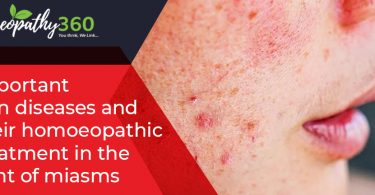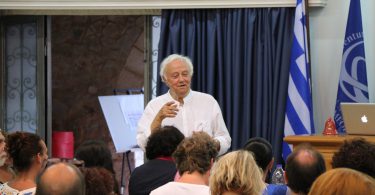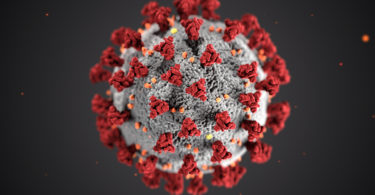 Cooper’s Arborivital System
Cooper’s Arborivital System
Focusing next on their mode of preparation as a feature of BFR that clearly distinguishes them from all other therapeutic systems, in using sunlight and spring water to capture the remedy ‘essence,’ Bach [1886-1936] adopted a technique reminiscent of the Arborivital Medicine of Robert T Cooper [1844-1903]. The use of sunlight also points to the ideas of Jakob Lorber [1800-1864] and Paracelsus [1493-1541]. Sunlight and spring water can quite justifiably be regarded to comprise a ‘process’ somewhat akin to distillation, in that the flower is ‘cooked’ in the spring water by the heat and light rays of the sun, such that the water becomes impregnated if not entirely saturated with the healing essence, vibration or energy of the flower.
Cooper described his own method thus: “the preparation of remedies used are tinctures made on the spot from living plants, proof spirit being employed for the sake of preserving their inherent properties…by allowing the spirit to come into contact with the living plant – the branch, while still attached, being kept plunged in the spirit and exposed to sunlight while thus immersed – heliosthened, as I term it.“Dr Cooper had an uncanny genius for discovering unusual remedies; some of these he got, no doubt, from old herbals; but it has been said that he used to lie down before a flowering plant by the hour, dragging from it its virtues of healing.”
Cooper conceived that there existed “in plant-remedies a force…which acted by virtue of a power in all respects similar to a germinating power in the human body,” [Cooper, 1900, 2] and “…in the living plants we get a force which, if applied…to disease, will arrest its progress and even cause its dispersal.” [Cooper, 1900, 3]
When we read Cooper’s methods, we often see strong hints of Bach: “Cooper’s hypothesis was that a curative ability or action is inherent in all living plant material, and that this does not require trituration, succussion or dilution to be effective….Cooper directed that the tinctures should be administered in single drop doses, and that these remedies should be given time to act fully before being repeated. The dose was administered in powder form with a single drop of the tincture
There seems little doubt that Cooper was “influenced by the Doctrine of Signatures and relied on observation of plant structures and characteristics…Cooper claimed that arborivital remedies were most suitable in crises which were incurable by any other means, and this includes homoeopathic methods” [Bonnard, 23] Cooper obviously decided that one should “allow oneself some latitude,” [Cooper, Feb 1893, 66] in deciding upon the true profile of any remedy, and that one should seriously question the view that “all medicine is contained in the repertory,” [Cooper, Feb 1893 66]. In this manner, he claimed to be “returning to the methods which, in the early days of homeopathy, Hahnemann undoubtedly employed,” [Cooper, Feb 1893, 66]
He believed that “the practitioner ought also to be able to go amongst any variety of plants, or any variety of medicinal agents, and determine their actions as weapons for the dispersion of disease in a manner undreamt of by any code of rules enunciated previously to homeopathy,” [Cooper, Feb 1893, 65].
He boldly drives very close indeed to the doctrine of signatures employedin previous medical systems [herbalism] when he states that he takes “advantage of all kinds of indications – such as occur to me from the habits of the plant, their appearances, and apparently unimportant features,” [Cooper, Feb 1893, 66]. Yet, in due course, he candidly admits to making some deviations from the straight and narrow. However, “any departure that I may be guilty of from the beaten tracks is to be judged of simply and solely by result.” [Cooper, Feb 1893, 67]
Having already cast doubt upon the reliability of provings data for the employment of medicine in sickness, Cooper then goes into more detail about his alternative method of obtaining reliable information about drugs in the field. He feels at the outset that “the doctrine of signatures…[ought to be brought] into accord with modern thought,” [Cooper, 1898, 265], especially considering that “the appearance of the roots or other parts of plants very often serve as a guide to their administration in disease, owing to…[their] resemblance to the diseases they cure,” [Cooper, 1898, 265]. Clearly, regarding such clues as gifts from ever-bountiful Nature, Cooper gives some fine examples. These include the “virtues of Hydrangea in Diabetes,” [Cooper, 1898, 270] which everybody knows is “the thirstiest shrub known, especially in the act of flowering,” [Cooper, 1898, 270]; the leaves of Ledum palustre are “somewhat spear-shaped,” [Cooper, 1898, 270], and thus its use for “penetrating wounds, bee and wasp stings, must have been guided…by a special morphological feature of the plant,” [Cooper, 1898, 270]. As Cooper questions, such notions could never have been derived from drug provings upon the healthy.
He does not regard this employment of signatures to displace provings, but merely to supplement it, to flesh out more details. He also maintains that the imperfect nature of all provings must inevitably mean that some symptoms are missed and thus “these symptoms cannot always be available for the purpose required,” [Cooper, 1898, 267] in treating the sick. The signatures that plants contain must be seen as “any feature connected with plant life that suggests the use of such plant as curative for any form of disease
Author (Source): Peter Morrell, Robert Thomas Cooper, Galway, Ireland: Homeopathic Times, Summer 2002





